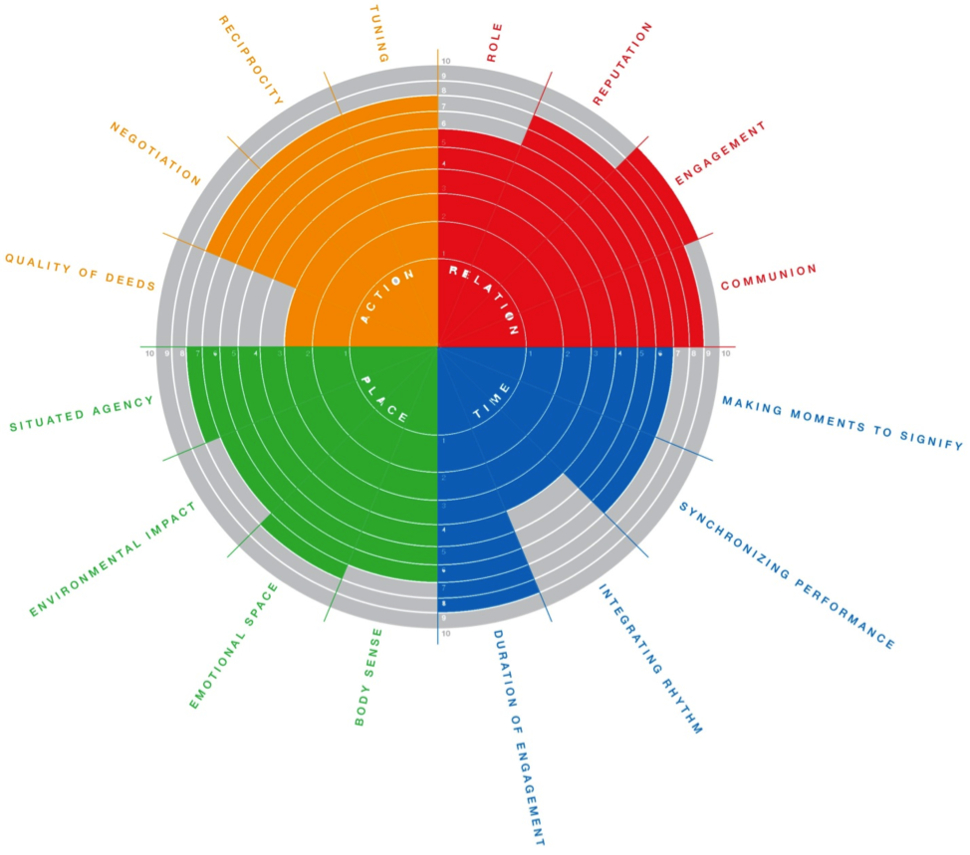Tatiana Armijos Moya, Pinal Desai, Truke Zeinstra
Relation : the texelaars vary in age groups. The relation to one another, in respect to public space is mainly familial, friendly and in rare extended cases, professional. It is thus a place where family friends and sometimes colleagues meet for a hang out or a good time together. The role they play, as a family person or a friend, defines their actions, and hence role is given high importance. Also, since texelaars are the primary users of the public place in summer and winter, their engagement to the space is very important. This also leads to a very high communion
Time: Different people have a different preference to use the public spaces, at their convenient time. In essence, it is available for use during its opening hours for all the time that it is open. Hence, it is as high as possible. The rhythm of the users is to some extent affected by the rhythm of the service providers, for example, of the bakery or the library. It also sometimes is instrumental in making moments to signify, that will add value to the Texelaars’ experience.
Place : The texelaars are the ones who will use this space in summer and winter. For them, this public space should not lose its meaning with the seasonal changes in weather conditions. Hence, it is important to include them in every stage of designing. The locals should have some awareness about how they feel about their bodies, which defines, for example, how they dress. But it is irrelevant sometimes if they are just for a regular outing. The emotional space will also be high as their local monuments would remind them of their history and the natural systems will keep them integrated with the ecology. In this sense, they will have an environmental impact depending on the activities they do in the public spaces.
Action : it is important for the Texelaars that they have a fair trade and they get back what they invest in, in terms of both cost and deeds. This necessarily means that these have to be in tune for Texelaars with each other, for example, the installation of a sustainable option should not destroy the quality of someone else’s life. In this sense, it does not matter what sustainable options the neighbor intends to install, hence the quality of deeds does not have so much relevance as the reciprocity or negotiation.
To conclude, we analyze two types of actors: the tourists and the Texelaars. We observe that all the four actions of action, relation, time and place are very important to Texelaars in terms of public space. However, for the tourists, memories play an important role, hence the time they spend and the place they are in, these factors have primary importance. Since public space is a common ground for the locals and the tourists, it is important that there is some interaction of tourists and locals, so they spread their local knowledge and goods to the mainland, but it is also important to preserve the local culture and not be drowned by the globalization that is generated by the influx of the tourists. A sustainable solution should find a good balance between these two aspects.
Bibliography:
Nevejan.C & Brazier.F, 2014, Design for the value of presence, Participatory Systems Initiative Systems Engineering, Delft University of Technology.
